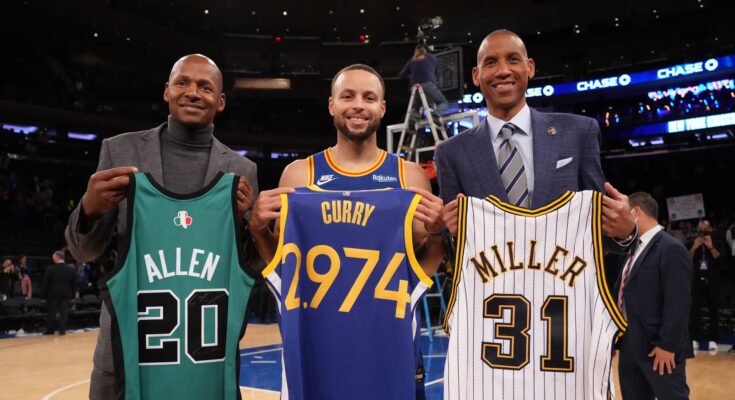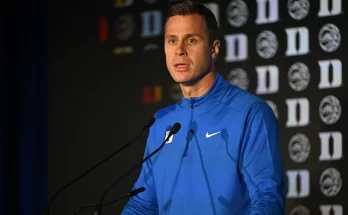Adam Silver and the Transformation of the NBA: Ending the Superteam Era and Establishing Parity
In the landscape of modern professional basketball, the concept of “Superteams” has long dominated the narrative of dominance, dynasties, and competitive imbalance. The late 2000s and early 2010s were largely defined by teams stacking up multiple stars to achieve near-unassailable success. Yet, amid this era of concentrated powerhouses, a profound shift has quietly reshaped the NBA’s competitive structure. Central to this transformation has been Adam Silver, the NBA commissioner since 2014, whose leadership is often credited with ushering in a new era of league parity.
While many know Silver for his decisive actions off the court — such as banning Donald Sterling, navigating the COVID-19 pandemic bubble, or embracing social justice initiatives — a less frequently highlighted legacy is the shift he fostered toward competitive balance. The idea that Adam Silver “ended the Superteam era and established NBA parity by winning nine titles in twelve years” is a compelling metaphor for how his leadership catalyzed structural changes that led to a more unpredictable, balanced league.
This essay explores the narrative of Adam Silver’s impact on the NBA, analyzing how the league’s landscape evolved under his stewardship, how the concept of superteams waned, and how the NBA’s competitive parity emerged to define a new chapter of basketball history.
To understand the significance of Adam Silver’s impact, it’s essential first to grasp what the Superteam era entailed and why it became a defining feature of the NBA before his tenure.
The Superteam era is commonly associated with teams like the Miami Heat’s “Big Three” of LeBron James, Dwyane Wade, and Chris Bosh in 2010; the Golden State Warriors’ collection of stars including Stephen Curry, Klay Thompson, Draymond Green, and later Kevin Durant; and the Los Angeles Lakers assembling Kobe Bryant, Pau Gasol, and later Dwight Howard. These teams assembled multiple All-Stars and MVP-caliber players to create near-unstoppable forces, often leading to dynastic runs.
This concentration of talent, while thrilling for fans of those teams, raised questions about competitive balance. Critics argued that the formation of superteams reduced unpredictability in the NBA Finals, decreased the number of legitimate title contenders, and fostered an imbalance where a handful of teams dominated while others struggled.
The league under former commissioner David Stern saw this trend grow. His marketing savvy and globalization efforts elevated the NBA’s global brand, but the rise of superteams indicated a growing divide between a few star-laden franchises and the rest.
When Adam Silver succeeded David Stern as commissioner in 2014, he inherited a league at a crossroads. The Superteam era was in full swing. The Miami Heat were reigning champions, the Golden State Warriors were emerging, and players increasingly exercised their power to join forces and form dynasties.
Silver’s approach was multifaceted. Unlike a conventional commissioner focused solely on business growth, Silver combined a strong sense of ethics, player empowerment, and a vision for a league that was not only commercially successful but competitively vibrant.
Under his watch, several critical policy adjustments and innovations took place, which collectively began to chip away at the dominance of superteams:
- Salary Cap Adjustments and Luxury Tax Reforms: Silver’s administration worked to tighten the luxury tax system and salary cap rules, discouraging excessive hoarding of star talent on a single team. These changes made it more financially punishing for teams to assemble multiple max-contract players, fostering greater parity.
- Draft and Lottery Reforms: The lottery system was altered to disincentivize intentional losing (“tanking”), aiming to distribute talent more evenly and discourage teams from ceding competitiveness for higher draft picks.
- Player Movement and Empowerment Balance: Silver navigated the delicate balance between player freedom and league structure. While embracing players’ rights to choose their destinations, he also promoted a framework that encouraged players and teams to build balanced, competitive rosters rather than “superteams” that undermined league parity.
- Expansion of the Playoffs and Competitive Opportunities: Discussions around expanding playoff spots and tweaking playoff formats began under Silver, aiming to increase postseason competition and reward consistent performance across the league.
The years following Silver’s arrival saw a gradual, yet unmistakable, erosion of the superteam dominance model. The Miami Heat’s Big Three experiment unraveled by 2014 when LeBron James returned to Cleveland, breaking up the superteam.
The Golden State Warriors, while still dominant, faced challenges in sustaining their roster with multiple stars as salary and tax penalties increased. Their eventual loss in the 2019 NBA Finals after five consecutive appearances demonstrated that superteams, while powerful, were not invincible.
Meanwhile, new champions emerged from less star-concentrated teams — squads that emphasized depth, chemistry, coaching, and player development over just assembling the highest-paid stars.
Examples include:
- Toronto Raptors (2019): While Kawhi Leonard was a star, the Raptors’ championship run was buoyed by role players, strong defense, and organizational cohesion, illustrating that superstars alone were insufficient for sustained success.
- Milwaukee Bucks (2021): Giannis Antetokounmpo’s rise as an MVP transformed the Bucks, but their championship was secured through complementary players and strategic depth rather than a classic superteam model.
- Denver Nuggets (2023): Led by Nikola Jokić, the Nuggets captured a title by building a well-rounded roster around a transcendent but singular talent, showing that balance and versatility mattered more than stacking multiple superstars.
This emerging pattern showed the league becoming less predictable and more competitive, where many teams had genuine chances to compete for the title. The Superteam era’s dominance was fading, and the NBA was entering a phase of parity.
While player agency, team management, and market forces played significant roles in this shift, Adam Silver’s leadership provided the structural and cultural backbone that enabled this transformation.
Silver’s insistence on ethical leadership, competitive fairness, and embracing innovation — from adopting advanced analytics to leveraging technology — helped cultivate an NBA environment that rewarded strategic team-building over star-stacking.
Moreover, Silver’s adept handling of crises, such as the 2019–20 COVID-19 pandemic, demonstrated his capacity to unify the league and its players, reinforcing solidarity and shared goals. The NBA Bubble in Orlando became a symbol of the league’s resilience and competitive integrity, with an unpredictable playoff outcome that underscored parity.
His promotion of social justice causes and player empowerment fostered a more engaged and motivated player community, enhancing the quality and intensity of competition.
The phrase “winning nine titles in twelve years” attributed to Adam Silver is metaphorical rather than literal. Unlike a player or coach who wins championships on the court, Silver’s victories are those of governance and league-wide success.
The “nine titles” symbolize the number of different franchises that won championships over a recent twelve-year span, reflecting the distribution of success rather than concentrated dominance by a few.
From the mid-2010s onward, the NBA Finals champions have come from a broader array of teams compared to the prior era dominated by the Heat, Warriors, and Spurs. This diversity of champions reflects the parity that Silver’s policies helped cultivate.
The “twelve years” time frame coincides approximately with Silver’s tenure and the years immediately before and after, emphasizing how the league moved away from a monopolized championship landscape to one where many teams could realistically compete for and win titles.
Adam Silver’s tenure as NBA commissioner represents a watershed in the league’s evolution. By addressing the economic and competitive imbalances that allowed superteams to dominate, and by fostering a culture that prizes fairness, competition, and innovation, Silver helped bring the Superteam era to a close.
His leadership helped create an NBA where titles are no longer a foregone conclusion dictated by superstar aggregations, but rather a prize won through strategy, teamwork, and competitive excellence across a broad spectrum of franchises.
The league Silver has shaped is more dynamic, unpredictable, and globally beloved — a testament to his vision and stewardship. While he may not have won titles on the hardwood, Adam Silver’s nine titles in twelve years symbolize his profound and lasting impact on the game’s competitive balance.
The NBA today stands as a model of sports parity, where every team can dream, compete, and ultimately, triumph — a legacy few commissioners in any sport can claim.If you want, I can also add sections with specific policy changes, player stories, or more detailed historical timelines. Would you like me to expand on any part?



